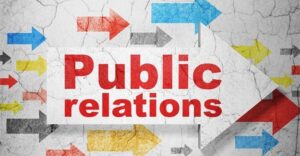In terms of public relations, the term ‘media’ refers to the different communication channels a company can use to reach new potential customers.
There are four main types of media, including paid, earned, shared, and owned media. These different types of media make up what many PR professionals know as the PESO model.
Paid media
Paid media include sponsorships, sponsored content, advertising, advertorials, and more. It can also include ads on TV, radio, and print, as well as any other types of paid advertising. That means paid media can also include digital ads such as Google ad words and pay per click, social media ads, sponsored posts, and banner ads.
Earned media
Earned media or media coverage stems from media relations and describes any content that someone besides a business creates about that business or its products and services. Earned media is all of the media coverage a company receives on websites that aren’t owned by that business. That means earned media is any media coverage that talks about a business, its products, services, opinions, expertise, or ideas in a news story, whether in print, radio, or digital outlets.
Earned media is also whenever a newspaper or different publication features or quotes a business, and when a spokesperson for a company appears on national or local TV shows, along with any mentions of the business on blog posts, reviews, and social media platforms.
Shared Media
Social media platforms are considered shared media platforms in public relations. These platforms are constantly changing and evolving beyond what marketing or customer service employees are using.
Many companies have started using social media platforms as the main communication channel both externally and internally.
Owned Media
Any communication channel that a company controls is considered owned media. It also includes all of the content a company creates on its blog or its website, along with white papers, presentations, e-books, and more. All of the content, as well as its distribution, is fully controlled by the business that created it, which means the company can edit, add, or remove it. Some people think that social media is part of owned media, not its own branch of media, as previously mentioned in shared media.
However, since social media companies are technically licensing or leasing an account to a business, they also have the ability to take that account away at any time according to their terms and conditions. This is why social media content can be considered shared media.




